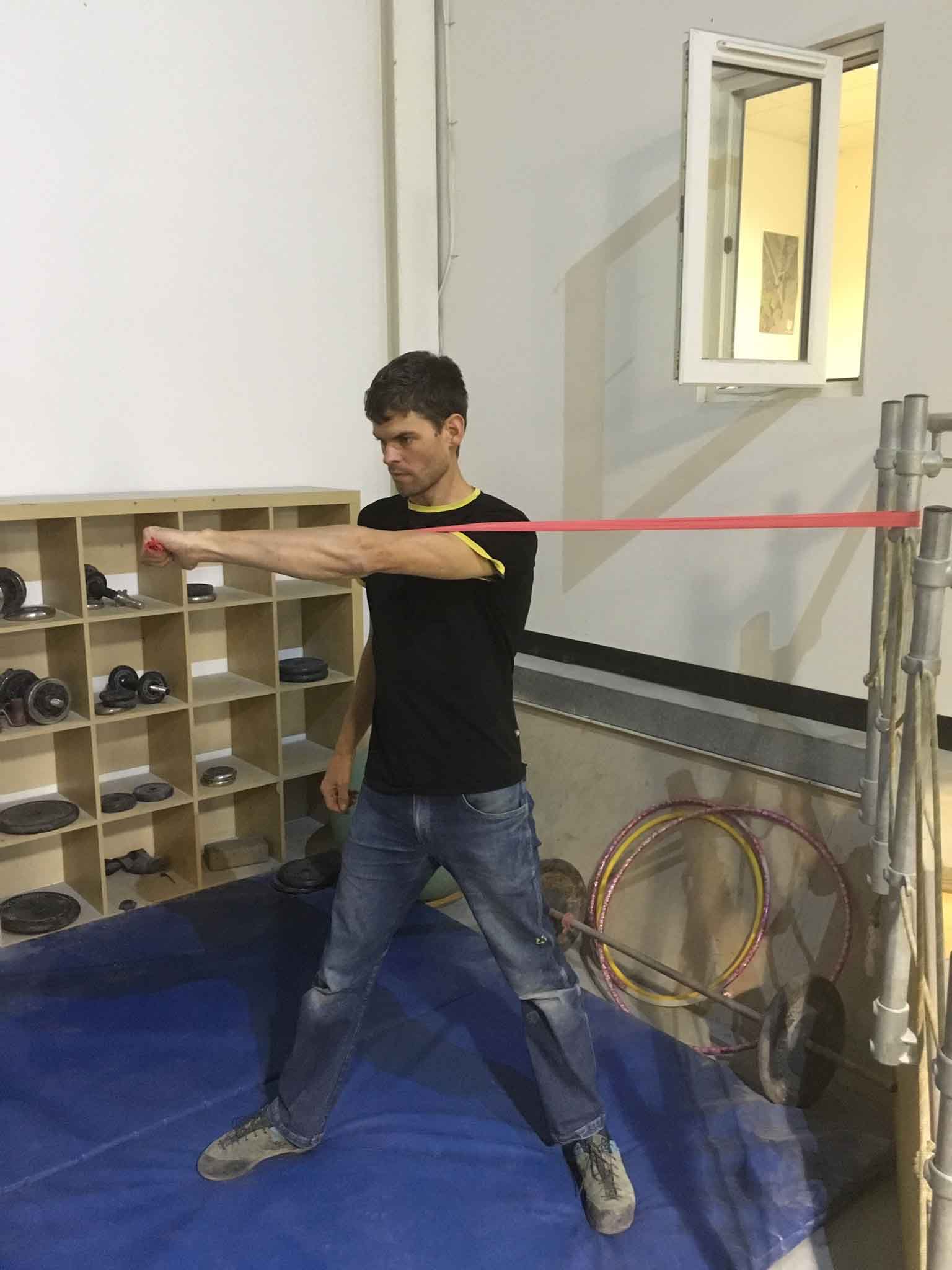
Shoulder Stability
Note: Before going ahead with a training regime we strongly recommend you seek professional advice from either a qualified sports coach or qualified health professional.
Shoulder / Scapular stability is a key component of climbing performance. Strong rotator cuff muscles enable us to perform a wide range of climbing movements and maintain the health of our shoulders helping us prevent and reduce the risk of injury and keep climbing. Combined with regular flexibility and antagonist training, shoulder stability is a must for all climbers.
This article gives you 6 exercises to help stabilize your scapular and shoulder. Ideally these exercises should be performed 2 to 3 times a week. The exercises require very little equipment and time; a 1.5m long theraband, depending on your strength a medium resistance one (red or blue) would be a good starting point. A foam mat or soft padded floor will make the first exercises slightly more comfortable and an anchor point for the theraband.
The following exercises are ideally performed at the end of a climbing session when you are fully warmed up or after completing a suitable warm up and mobilisation of the body.
The Basics
The starting point for shoulder stability should be to reset the shoulder blade by strengthening the Trapezius muscles. As shown in Figure 1.1 and 1.2, lying face down on the floor with the arm at around 135°, working on one arm at a time, raise the arm off the ground; aim to raise the arm from the elbow. You should feel your scapular retracting and the muscles under it working. The contractions should be slow with each repetition paused at the top for a few seconds. Aim to do 15 – 20 repetitions.
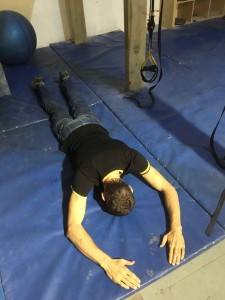
Figure 1.1: Floor based arm raises. Starting Position, pulling the arm up from the shoulder blade / scapular
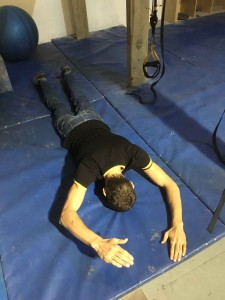
Figure 1.2: Floor based arm raises. Finishing Position, pulling the arm up from the shoulder blade / scapular
The next exercise is a progression on the floor based arm raises. In the same position, but with a theraband securely fastened in front of you, pull the arms back from the elbows, retracting the shoulder blade as shown in Figure 2.1 and 2.2. Aim to do 3 sets of 12 reps, pausing at the end position for a few seconds. These 2 exercises are a key first step in stabilising the shoulder, if these feel hard then don’t progress to the next set of exercises till you can perform these comfortably.
The Next Step
These next exercises aims to focus on individual rotator cuff muscles. For all these exercises you are aiming to perform 10-12 repetitions and 3 sets. Once you’ve mastered these and ensuring you can maintain good posture and form throughout the exercises you can look to increase the resistance and drop the repetitions to 5-8 reps.
Infraspinatus: The first exercise aims to work the Infraspinatus by laterally rotating the arm (Humerus) away from the body. As shown in Figure 3.1 and 3.2, fix a theraband around an anchor at just above waist height. Keep the elbow beside but not touching the body, rotate the arm away from you, squeezing the shoulder-blades together.
Subscapularis: The next exercise is the opposite and aims to work the Subscapularis muscle, which internally (medially) rotates the arm (Humerus). Using the same anchor point as with the above exercise, keep the elbow beside the body and the hand starting out to the side then rotate the arm inwards as shown in Figure 4.1 and 4.2.
Teres Minor: Next up is an exercise to work the Teres Minor, this laterally rotates the arm and is worked by raising the arm to 90° with the arm also bent at 90° as shown in figure 5.1 and 5.2, then laterally rotating it, finishing with the hand above the head. The easiest way to anchor the theraband in this exercise is to stand on it.
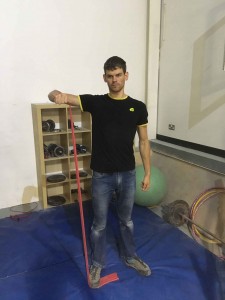
Figure 5.1: Lateral rotation of the arm with the arm raised at 90° and arm bent at 90°. Starting position
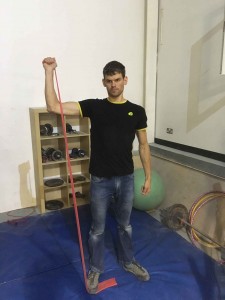
Figure 5.2: Lateral rotation of the arm with the arm raised at 90° and arm bent at 90°. Finishing position
Serratus Anterior: The final exercise is not for the rotator cuff but for the Serratus Anterior, although the scapular will still be stabilised by the rotator cuff muscles during the exercise. In this exercise the theraband is fastened at shoulder height behind you. For the exercise push forward with the arm as if punching and then finish by extending the shoulder forward as far as possible whilst keeping the body stationary as shown in Figure 6.1 and 6.2.
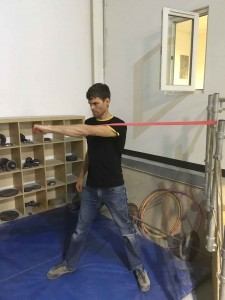
Figure 6.2: Serratus Anterior muscle, pushing the arm then the shoulder forwards. Finishing Position
Shoulder Stability Video
Demonstration video of all shoulder stability exercises.
For further training ideas please go to www.onsightcoaching.co.uk or for our Shoulder Mobility article which complements this article please go to http://onsightcoaching.co.uk/shoulder-mobility
Note: If you have pain in your shoulder or back before or during these exercises, or are finding it difficult to improve after following these exercises for 5 weeks, please consult a health professional to assess you further in order to isolate any problems. Onsight Coaching strongly recommend Alex Haddow at Care for Health.
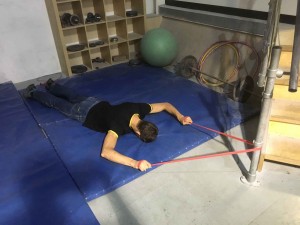
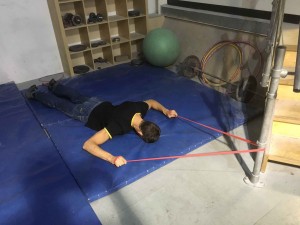
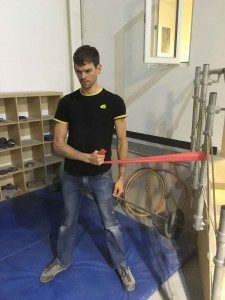
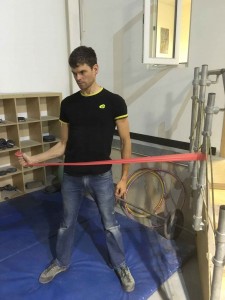
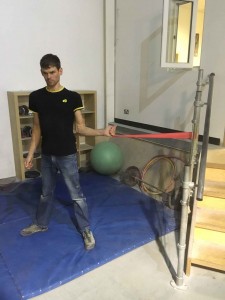
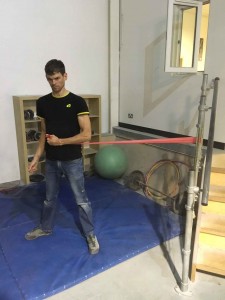
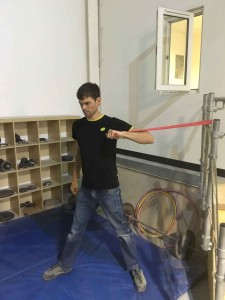
One thought on “Shoulder Stability – Six shoulder exercises for a healthy rotator cuff”